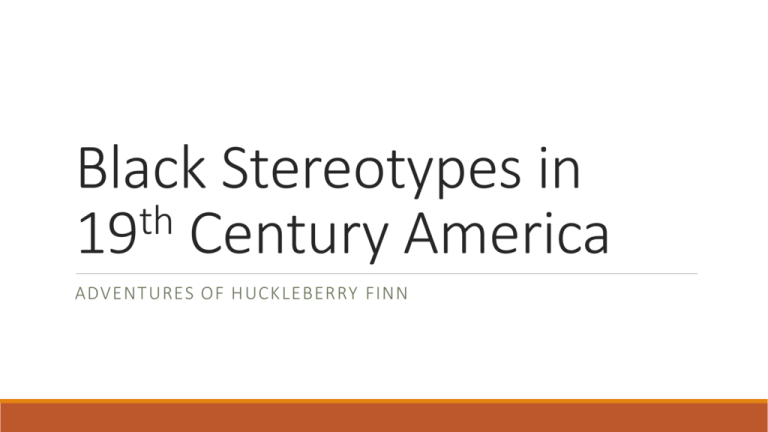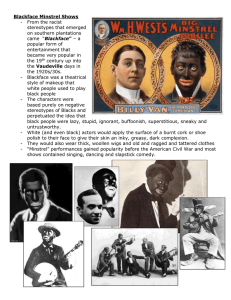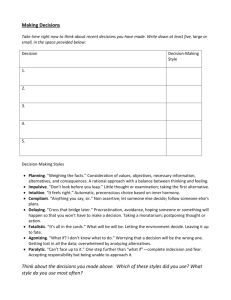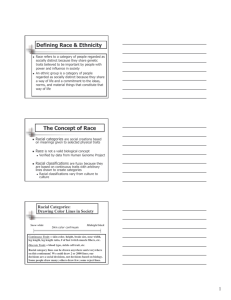Black Stereotypes in 19th Century America
advertisement

Black Stereotypes in th 19 Century America ADVENTURES OF HUCKLEBERRY FINN Thomas Carlyle •English poet and philosopher •Criticized England’s emancipation of West Indian slaves •Pamphlets and cartoons picked up and widely circulated by proslavery forces in America •Reiterating popular myths •Ideas persisted during and after Civil War Common Stereotypes •Unmotivated •Unintelligent •Uncivilized •Not equipped for independence Quashee’s Dream of Emancipation •Uses stereotypes as source of “humor” •Can be used to understand racist stereotypes of era •“Quashee” among most popular West Indian names •Name came to represent popular racist stereotypes Political Cartoons •Emancipation Proclamation and Northern attitudes •Subjects drawn from writings of •Thomas Carlyle •Thomas Jefferson •Southern slavery advocates Quashee’s Dream of Emancipation Clockwise, from top left: •Panel 1: He dreams that massa and he exchange positions, as above. •Panel 2: He dreams that he is feted at Washington, and solicited to stand for Congress. •Panel 3: He dreams that the young missis humbly waits upon him while he reads the Tribune. •Panel 4: He imagines himself a BrigadierGeneral seated in a stagebox at Wallack’s Theatre. •Panel 5: He dreams that all the light and easy employments at the North and elsewhere fall into his mouth. Quashee and Huck Finn CHARACTERS •What stereotypes are •What characters in the represented in the novel display these Quashee panels? characteristics? •How are these •What might have been depicted? Twain’s point? STEREOTYPES Minstrel Shows •White man’s characterization of plantation slave and free blacks •Caricatures took hold of American imagination •Audiences expected dark skinned people to conform to one or more stereotypes Minstrel Shows •Dim-witted •Lazy •Buffoonish •Superstitious •Happy-go-lucky •Musical Minstrel Shows •Height of popularity 1830-1890 •Remained popular into 1920s •Staple of talent shows until 1960s Jim Crow The term Jim Crow originated in 1830 when a White minstrel show performer, Thomas "Daddy" Rice, blackened his face with burnt cork and danced a jig while singing the lyrics to the song, "Jump Jim Crow." Zip Coon First performed by George Dixon in 1834, Zip Coon made a mockery of free blacks. An arrogant, ostentatious figure, he dressed in high style and spoke in a series of malaprops and puns that undermined his attempts to appear dignified. Mammy Mammy is a source of earthy wisdom who is fiercely independent and brooks no backtalk. Although her image has changed a little over the years, the stereotype lives on. Her face can still be found on pancake boxes today. Uncle Tom Toms are typically good, gentle, religious, and sober. Images of Uncle Toms were another favorite of advertisers, and "Uncle Ben" is still being used to sell rice. Buck The Buck is a large Black man who is proud, sometimes menacing, and always interested in White women. Wench/Jezebel The temptress. During the minstrel era, wenches were typically a male in female garb. In film, wenches were usually female mulattos. Mulatto A mixed-blood male or female. In film, often portrayed as a tragic figure who either intentionally or unintentionally passes for White until they discover they have Negro blood or are discovered by another character to be Black. Pickaninny Picaninnies have bulging eyes, unkempt hair, red lips, and wide mouths into which they stuff huge slices of watermelon. Mr. T. Rice as The Original Jim Crow, ca. 1832 sheet music cover “History ob de World” (Boston, 1847) Plantation scenarios were common in minstrelsy, as shown in this post-1875 poster for Callender's Colored Minstrels. Commercial Club Minstrels, Belvidere, Ohio, 1910. Minstrel Man by Langston Hughes 2 minutes Because my mouth Is wide with laughter And my throat Is deep with song, You do not think I suffer after I have held my pain So long? Because my mouth Is wide with laughter, You do not hear My inner cry? Because my feet Are gay with dancing, You do not know I die? How many stereotypes does Hughes manage to pack into only 16 lines? You have 2 minutes with your group to identify as many as possible.





